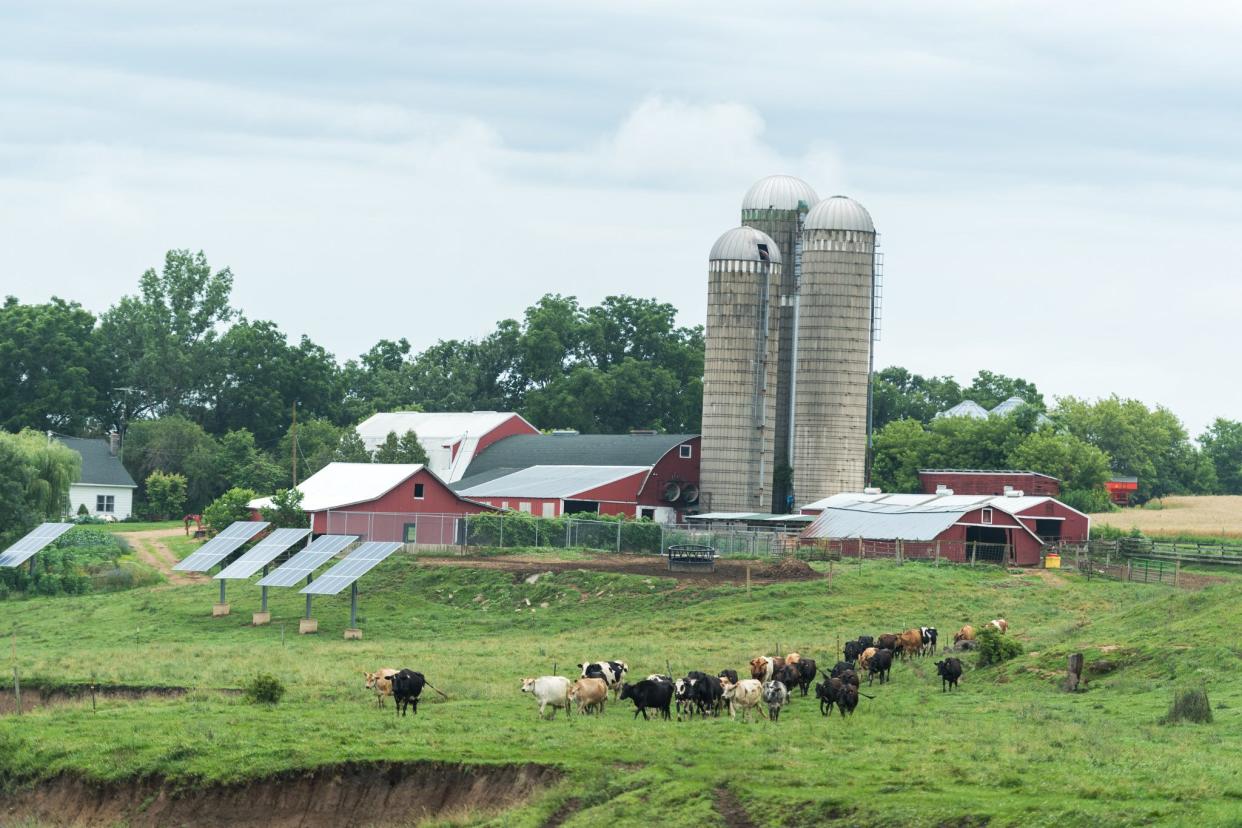Citizens' Climate Lobby: Help: Forestry, farming incentives can beat climate change

The National Oceanic and Atmospheric Administration recently issued two important reports. The first documents the sheer amount of CO2 in the atmosphere as of May 2022. The second details the impact of all greenhouse gasses (GHG) — CO2, methane, nitrous oxide, chlorofluorocarbons, plus 16 other chemicals — on heat gain.
Simply put, the reports were not good news. Most concerning is the rate at which CO2 concentration is increasing — an additional nine parts/million by volume in the last three years alone. This is unprecedented. In total, GHG now traps 49 percent more heat than when measurements began in 1990. Continuing to add GHG to the atmosphere will only lead to more heat trapped and the negative social, economic and health impacts which result.
CO2 is necessary for plant growth and has always been a component of earth’s atmosphere. Prior to the Industrial Revolution, however, the concentration level was never more than 290 parts/million. The 1950s initiated an accelerating use of fossil fuels and an increase to 300 parts/million. Today that measurement is 421 parts/million, a 40 percent increase in just 72 years. There is no historical geological analog for this kind of increase.

Despite some decrease in CO2 emissions during the COVID lockdowns the overall increase in atmospheric concentration level continues to rise. About 50 percent of CO2 is absorbed by the Earth’s land and oceans; a process which scientists call carbon sink. When a system absorbs more CO2 than it emits that’s called a net sink. It is generally recognized that the ocean absorbs approximately 30 percent of all CO2 in the atmosphere and has functioned as a net sink.
Each sink is a unique expression of its particular biome and each is subject to different forces. The net effect of those forces is variable. The Brazilian Amazon tropical forest, for instance, has lost 350,000 square kilometers of arboreal cover since 2000 to deforestation. The previously sequestered carbon has been released. This area is now a source, not a sink, even though the entire forest may still function as a sink. This variability within sinks accounts for the overall oscillations in sink function being observed.
Withdrawal from the use of fossil fuels continues to be the focus of efforts to reduce negative climate change effects. However, the potential to sequester CO2 is gaining in interest. Increasingly recognized is the potential to alter agriculture and forest management practice in such a way as to have them function more effectively as net sinks. Think of this as carbon farming.
Agricultural soils could sequester one billion tons of carbon annually. Planting perennial crops like fruits, vegetables and legumes is one carbon farming method. Another is using cover crops — like clover, beans and peas — which eliminate periods of bare ground and ensure carbon sequestration on a year-round basis. The added bonus? These cover crops become “green manure” when plowed under. Minimizing soil disruption can retain five times as much carbon in the soil.
Forests lose trees in multiple ways — fire, natural aging, disease, and timber harvesting. The USDA recently studied the impact of replacing those lost trees on the carbon sequestering capacity. Particularly in western states, Florida, and northeastern states, they found that tree restocking had a significant positive 20 percent impact on overall forest capacity to sequester carbon. To quote one study leader, “We must work with nature to ensure regeneration success by planting the right trees in the right places and in right densities.”
More: Citizens' Climate Lobby: Now or never? Still hopeful
More: Citizens' Climate Lobby: Clean energy transition would break Russia’s geopolitical hold
More: Citizens' Climate Lobby: The economics of real, perceived climate change
Subscribe: Get unlimited access to our local coverage
The opportunities in carbon farming for ranchers, farmers and foresters are real. Yet, there is a lack of agreement, organization and plain incentive to do what can be done. However, the Growing Climate Solutions Act (S. 1251/H.R. 2820) in Congress is a good, bi-partisan first step to address this issue. The act codifies the whole carbon sequestration process and allows good actors to certify and market carbon credits which can then be sold in a voluntary carbon market.
And this is where you come in. You can play an important role in dealing with the changing climate. The act passed the Senate in a 92-8 vote. Currently it resides in the House Agricultural Committee. Please contact your representative and ask that this bill be brought to a vote. Passing this act will be good for farmers, good for you, and good for the planet.
— Dennis Icabone a member of the Holland Area Citizens' Climate Lobby chapter.
This article originally appeared on The Holland Sentinel: Citizens' Climate Lobby: Forestry, farming incentives can beat climate change

